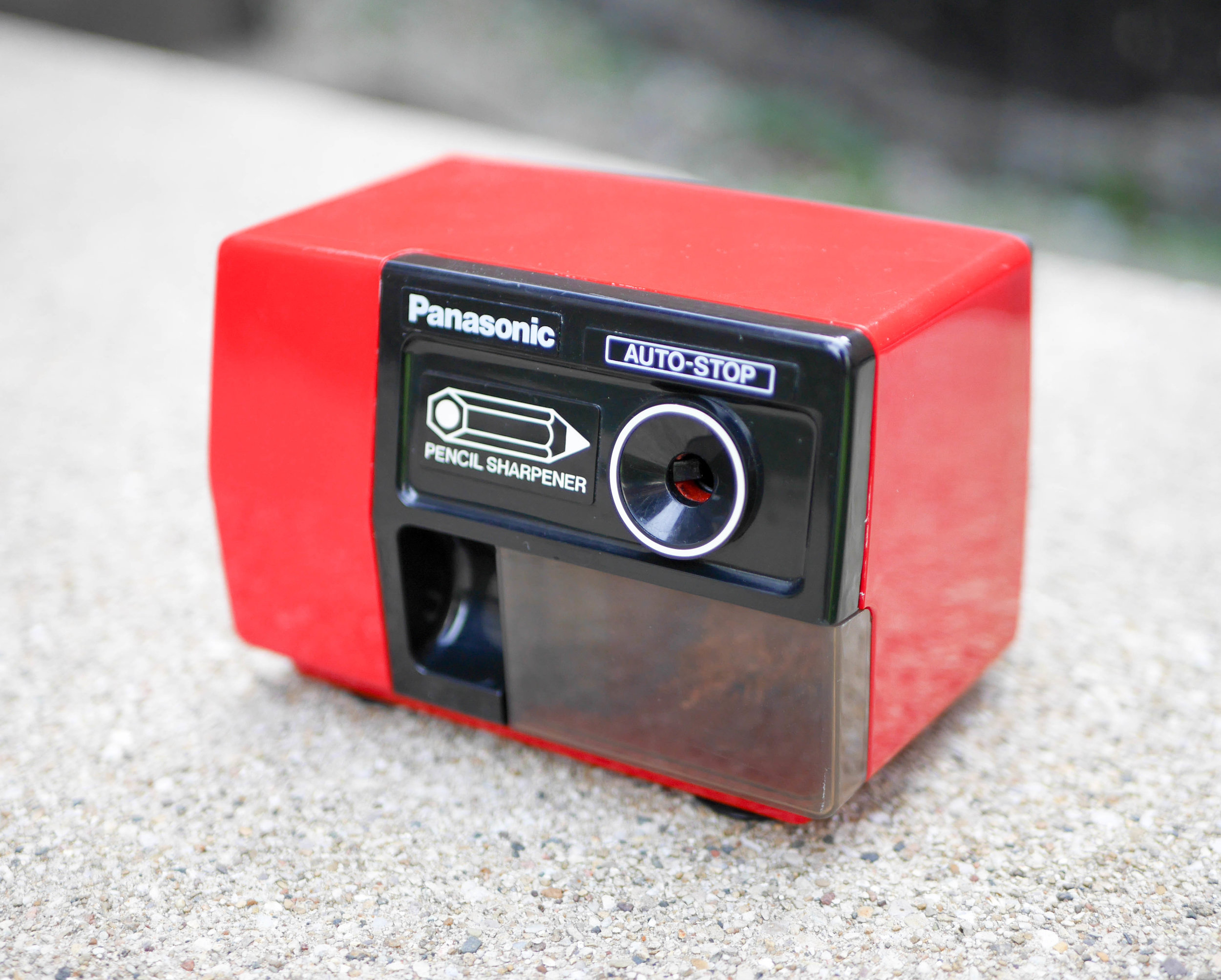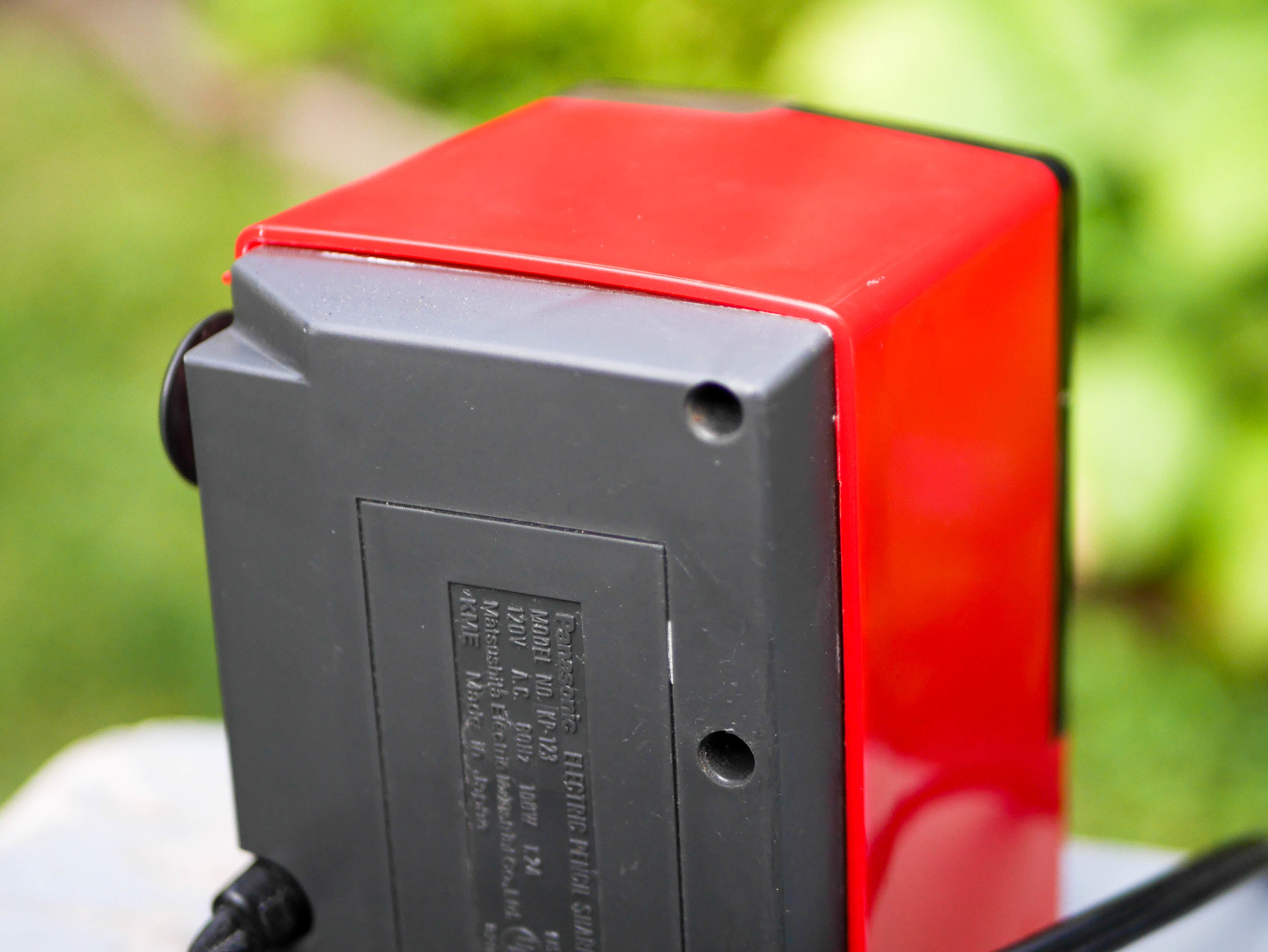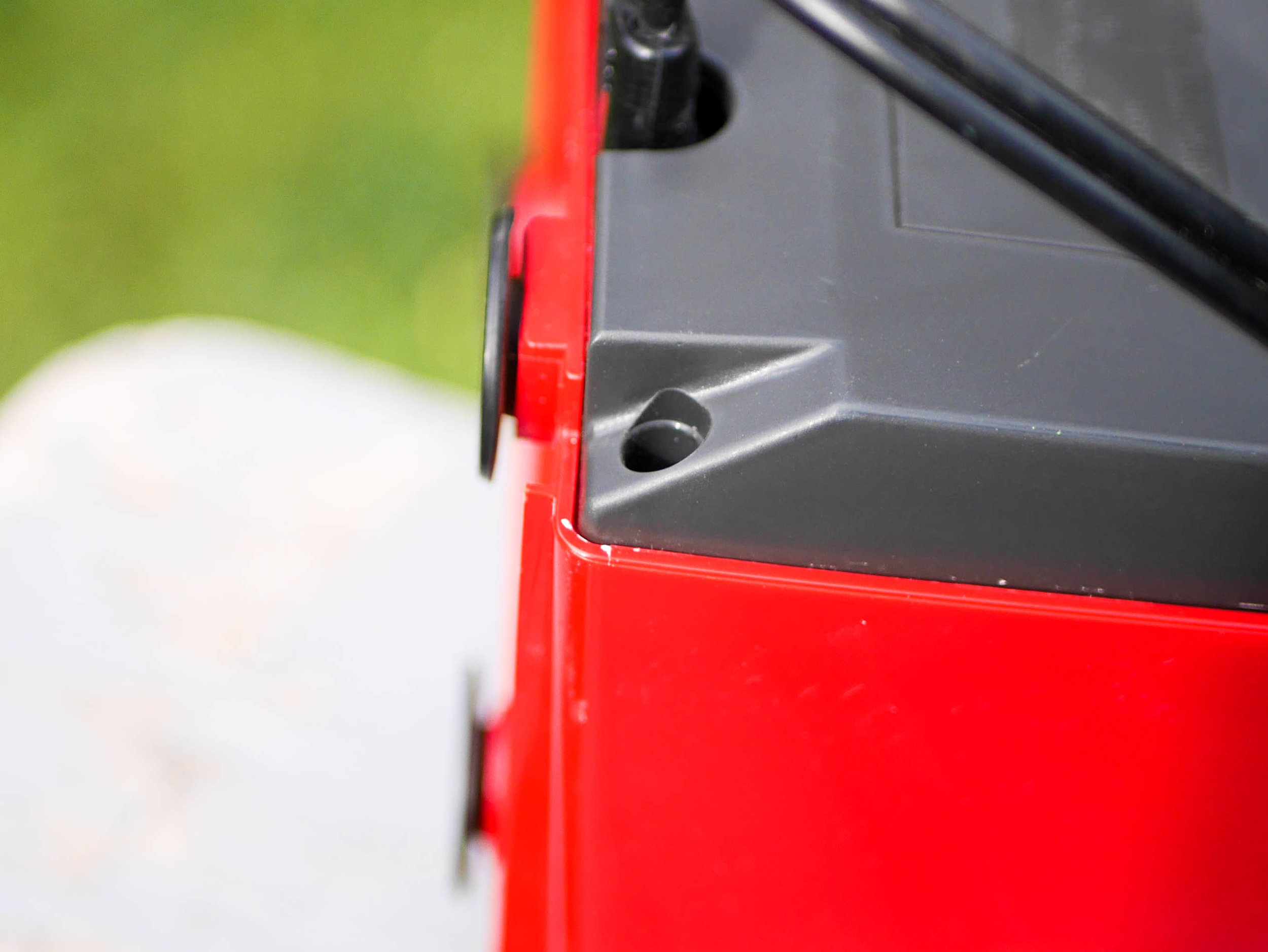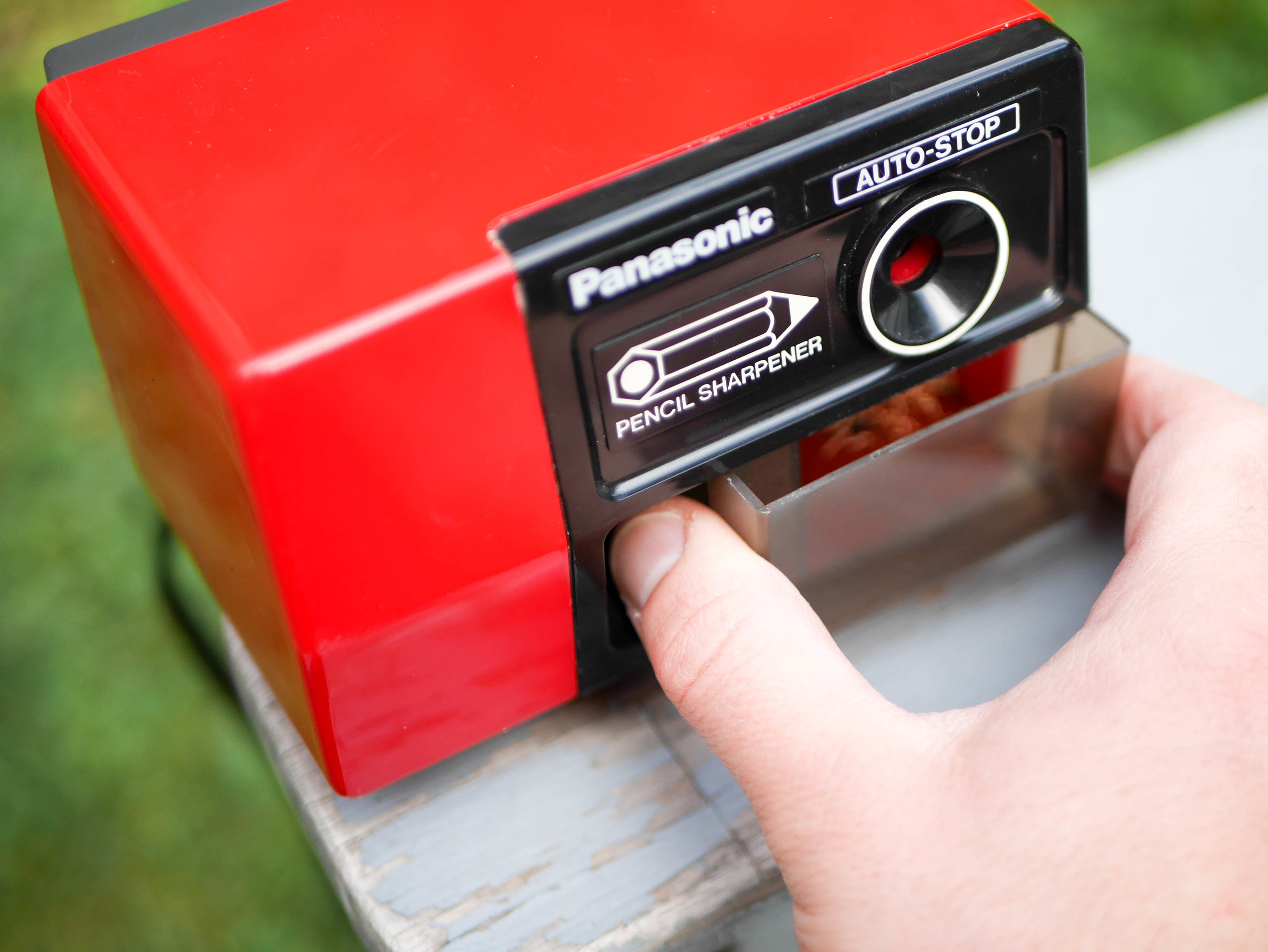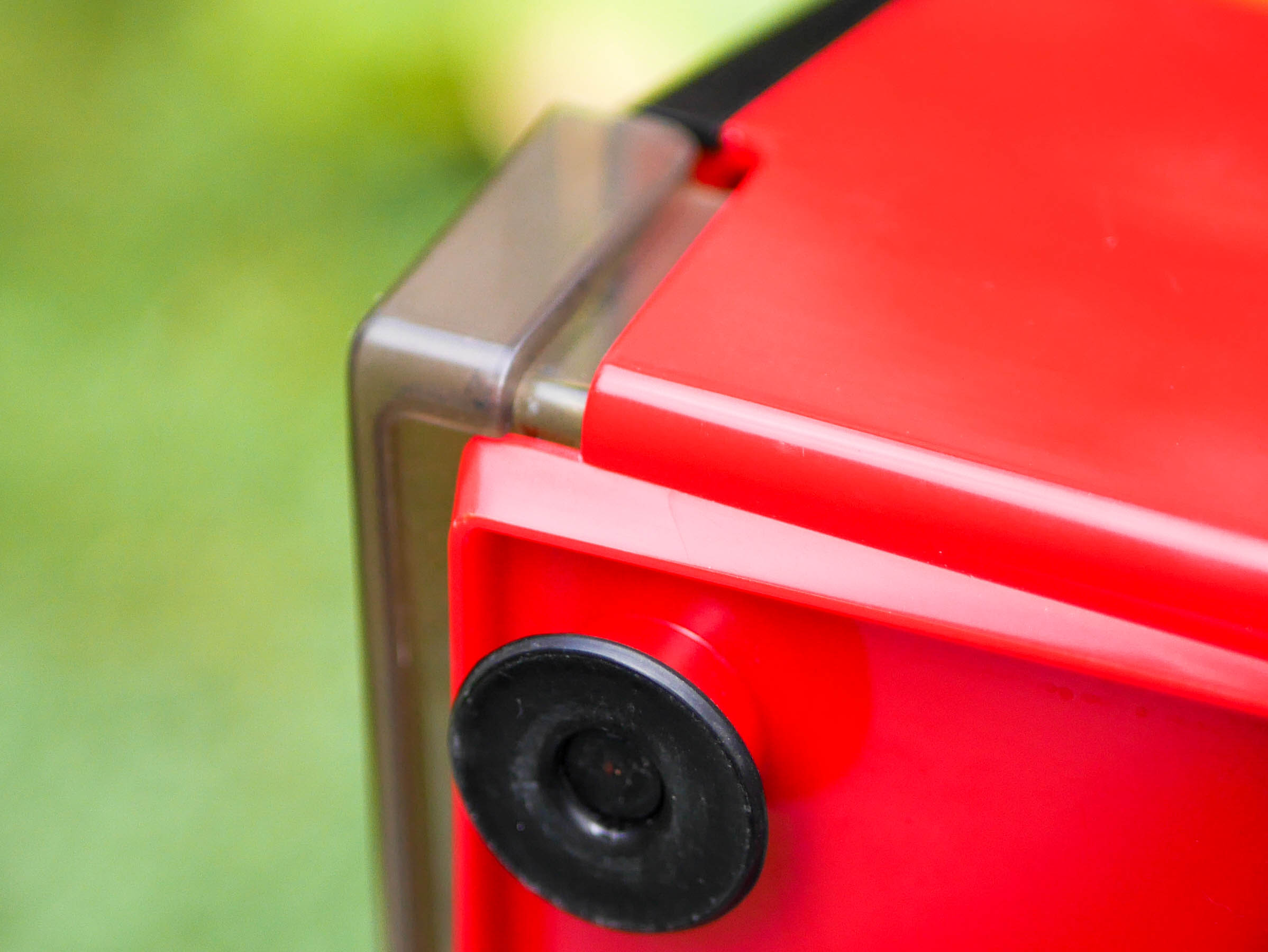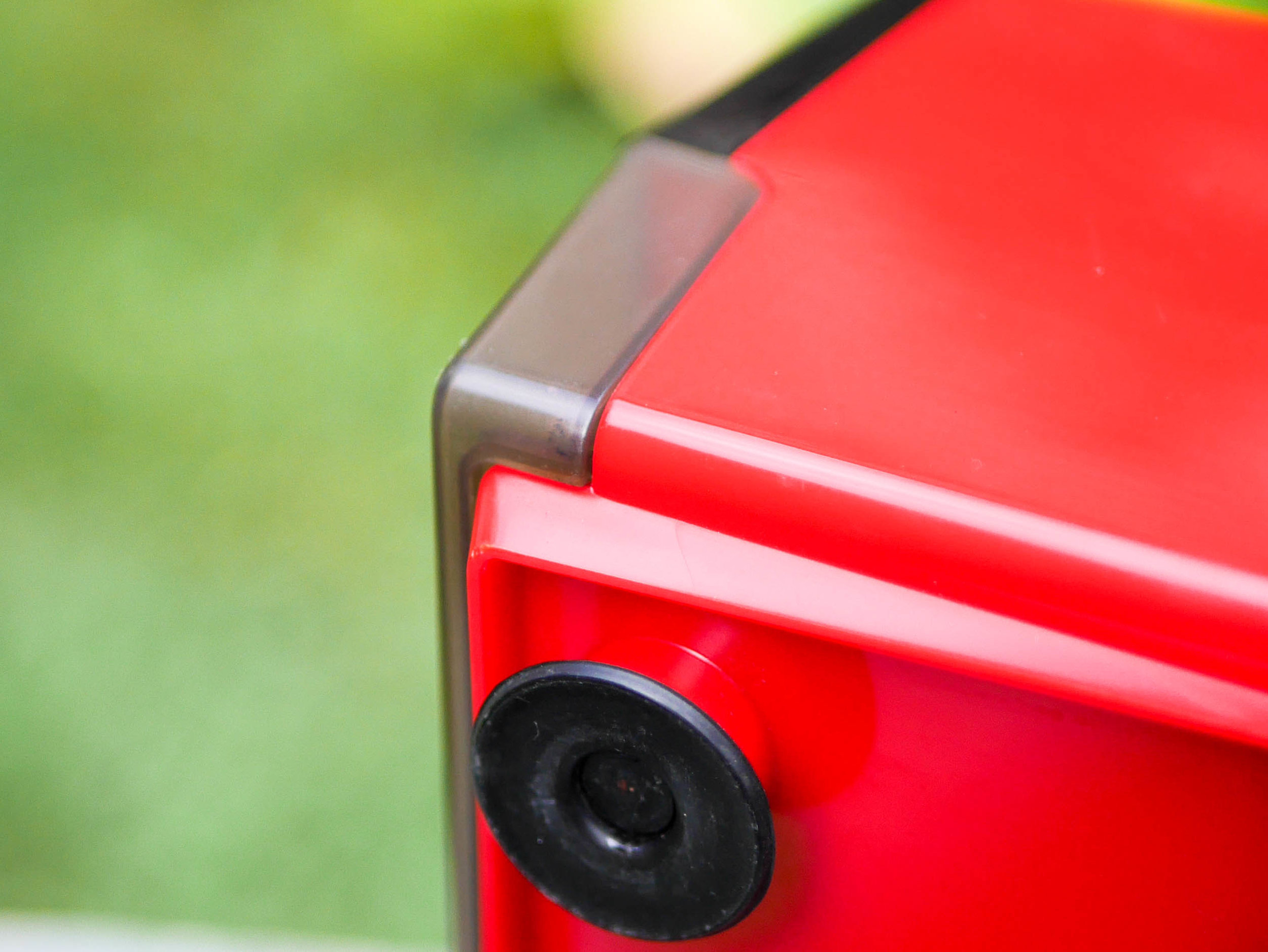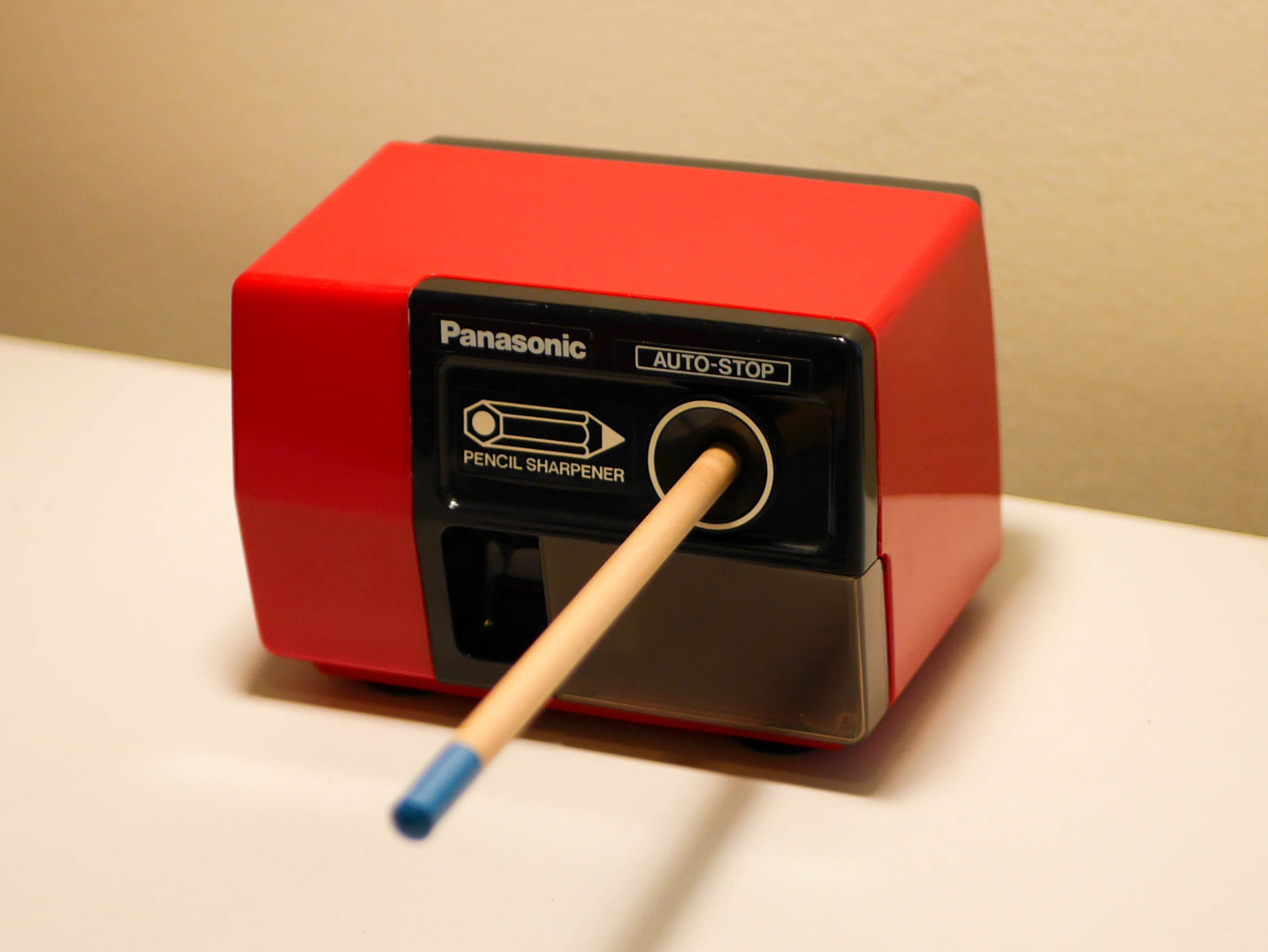Panasonic : Auto-Stop Pencil Sharpener
Review by Gerry Mayer
The Panasonic Auto-Stop pencil sharpener, model number KP-123, is a bold and modern take that challenges the older faux vinyl wood grain applied pencil sharpeners of the past. Though I couldn't nail down the exact release date, based on the form and styling, I'm guessing it was released sometime in the 80's. Unlike most pencil sharpeners that blend to the office or desk environment, this sharpener comes in bright red and bright blue models which demand your attention even when not being used.
The outer housing is made up of mainly red and black plastic with a glossy finish. The form is boxy but has some friendly filleted corners that evoke Japanese design. The outside styling is perfectly rectangular with only a horizontal belt line that formally divides the top pencil area from the bottom pencil shaving container. The glossy surfaces and rounded corners are perfect at catching the light, letting the pencil sharpener look its best in many different lighting environments, great job ID team! Maybe the red glossy plastic was inspired by the Olivetti Valentine Typewriter where early plastic was used as more of a high end material that took a lot of expertise in chemistry and manufacturing to produce such a nice result.
Around the back, is a matte grey plastic part with a few visible screw bosses that also hint at its construction (similar to the Tivoli Audio Model One). You can also see how the red housing slides over the grey back with the several millimeter lip that shows the thickness of the red plastic, giving an impression and physical feeling of quality plastic construction.
The surface features on the bottom corners of the grey part seem to be a strange choice, mainly because of the contrasting flat surfaces between the two corners. This jagged surfacing doesn't fit the friendly rounded corners and may look more balanced if the grey part had one continuous surface across the bottom. Perhaps it needed to be flat to incorporate the electrical cord. Overall the back is nicely designed, with embossed monochrome text that doesn't draw too much attention.
On the bottom, the four rubber feet act like suction cups that work well to keep the sharpener in place on a flat surface. Since they are very flat and don't have much give to them when pressed down, they don't absorb any noise or vibration when running very well. The cord has three cylindrical affordances on the overmold that look like they were designed to help you remove the cord but the cord isn't actually removable. The cord was nicely incorporated into the body of the sharpener with a round, half circle cutout that gives the cord additional strength.
The black front panel provides a nice contrast to the red body and creates a nice negative space that gives the sharpener an asymmetric quality. I like how the top of the black panel wraps around to the top and sides which give this part an extra perceived thickness. The pencil logo adds a lot of character to the sharpener, its not functionally important but makes it look more fun, interactive, and instructive.
The bottom half of the front panel has a nice cylindrical cut that gives plenty of room for your thumb when removing the pencil shaving container. The container part seems to be made of semi transparent polypropylene which allows this part to be slightly flexible. The container is held in place with two tabs on the sides that pressure fit into notches. This material choice allows the part to flex inwards and easily snap into place. The dark transparent grey color matches the color front panel as closely as possible while still letting the user see if its time to empty the shavings. This color mismatch doesn't add too much contrast in the overall hierarchy of the product. This part is very functional but I wonder if a matching black plastic part with a clear small window to see the amount of shavings along the front would be more resolved.
A view of the inside reveals the sharpener assembly and also shows how thin the black front panel actually is even though it appears thick from the top and side of the sharpener. The inside also shows that the sharpener is constructed from a continuous red plastic, not a part that was painted red. This choice of not painting it is great because scratches below the surface are less noticeable since there isn't white or black plastic underneath.
The pencil shaving container slides nicely into the sharpener and there was nice attention to detail in getting the part to wrap around the red edge on the bottom of the sharpener.
This switch turns on the sharpener when a pencil is inserted. It is barely seen because it is nicely camouflaged against the front panel.
The sharpener does a nice job creating a fine tip and it's also delicate enough for soft colored pencils, a nod to the quality of the sharpening assembly. The thing that mainly drew me towards this sharpener is wider and more shallow form which is different from the longer and thinner pencil sharpeners I'm used to using. This form makes it easy to hold sharpen with the right hand and hold onto the sharpener with the left hand. The form also saves some desk space so you can have it in front of you without taking over too much work space. All of these details create a sharpener that is simple to use, beautifully designed, and looks clean and new no matter how old it actually is.


